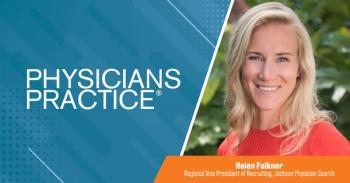
Revolutionizing healthcare efficiency through automated coding solutions
Even while other industries made the digital transition, clipboards and paper forms were still common sites in the waiting rooms of doctors’ offices
As the world leaps into an AI-dominated future, automated coding solutions that save doctors time and offer greater convenience will bring about the next wave of medical technology advancement.
With healthcare administration, doctors and the medical industry have been relatively slow to automate back office functions and digitally transform. Even while other industries made the digital transition, clipboards and paper forms were still common sites in the waiting rooms of doctors’ offices, with intake requiring the manual input of physical forms.
It wasn’t until 2014, when the federal government mandated the keeping of electronic health records that the medical profession was pushed to take an enormous technological leap forward. It has only been since then that digital patient information started to become common so that technology companies had some data to start building many technology solutions.
But the digital transition hasn’t been seamless — or simple. Instead of patient record keeping technology continuing to evolve, handling administrative tasks manually and clerically remains pervasive.
As a result, today, doctors are caught in a hybrid world that doubles their work and processes. The administrative burden of healthcare has become one of the biggest challenges facing medical professionals.
Healthcare providers report spending nearly half their time— over 15 hours a week — on paperwork and administrative tasks, as they’re forced to record every discussion they have with patients in their medical records for the sake of coding and billing.
These records are then turned over to their office’s coders, who read the documentation and manually match the discussion to insurance billing codes before sending them off to the insurers for payment. If the doctors are lucky, these charges are accepted — but they’re regularly rejected by the insurers, and doctors are forced to re-record, recode, and resubmit their claims.
It’s a headache inducing process for doctors, and a costly process for healthcare administrators.
As a result, doctors are spending an exorbitant amount of time not on patient care, but on paperwork — and it’s driving a clinician burnout crisis in our country.
It’s become a major administrative hurdle in our healthcare system. Even coders are getting burnt out, and it’s becoming an increasingly difficult position for medical offices to hire for.
It’s a labor intensive process that’s only adding to the
But AI-powered technology solutions are rapidly becoming more common and more effective. At every pain point for doctors — whether it’s in the recording, coding, or billing submission portion — there’s a technology that can ease the process.
Natural language processing tools can record and transcribe a doctor’s visit with a patient. The digital transcription can be used to populate the EHR system and code the diagnoses and treatments for bill preparation. AI enabled coding can more accurately, efficiently and completely code a patient’s visit, and revenue cycle management technology can automate the process of insurance denials and patient billing.
These technology systems offer faster and more efficient methods of interacting with the insurance companies to help doctors get paid. The technology doesn’t forget to write things down or add necessary codes, like humans often do. Thanks to the decade’s worth of medical data created by the electronic health records transformation, these systems are designed to be more effective and accurate.
The issue for medical practitioners today is that the software landscape is still somewhat in its infancy, and fragmented. Different systems have developed more than others; natural language processing capabilities are more proven than AI-enabled autonomous coding solutions, for example.
But the market is poised to grow; Nuance and its Dragon Medical One software
For doctors, solving the administrative burden could be transformative, allowing them more free time to see patients and allowing them to give more in-depth attention. Alternatively, it could simply ease their professional time demands and solve some of their burnout concerns.
Adoption will take time; clinicians are understandably concerned about entrusting their billing process to a new technology. It will also be simpler for some physicians to adopt than others; general practitioners who see all sorts of illnesses and maladies have significantly more complex billing requirements and different billing codes that they have to select than specialists that regularly perform the same treatments using the billing codes.
As doctors and their professional organizations test and experiment with these new technologies, more standardization will come, and doctors will become more comfortable with the tech.
But insurers are going to have to get on board — and understand their role in all of this. The insurers are way ahead of the healthcare community in adopting AI. In fact, there have already been lawsuits
Unified standards in coding will be key to facilitate widespread adoption of AI enabled coding; the industry was successful in uniting around HL7 for healthcare records as an example, and can be similarly successful by collaborating here.
Adoption won’t come easy, but it’s an absolute necessity for our healthcare system. Improving healthcare outcomes, doctor satisfaction, and cost depend on improving how our healthcare system bills and codes.
The demand on physicians today is simply too great. AI can and will change this.
Meade Monger is the CEO and founder of CenturyGoal
Newsletter
Optimize your practice with the Physicians Practice newsletter, offering management pearls, leadership tips, and business strategies tailored for practice administrators and physicians of any specialty.








